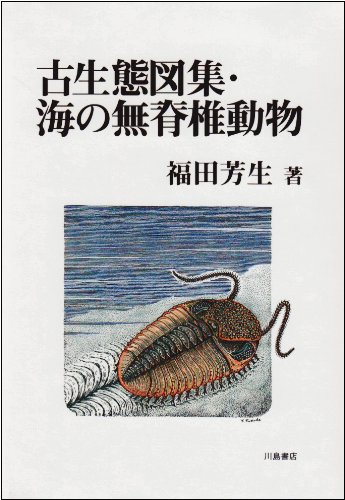1 0 0 0 古生態図集・海の無脊椎動物
1 0 0 0 日本におけるオウムガイ類飼育研究の進展
- 著者
- 浜田 隆士 奥谷 喬司 棚部 一成 出口 吉昭 福田 芳生 波部 忠重 平野 弘道 蟹江 康光 川本 信之 三上 進 小畠 郁生
- 出版者
- 日本貝類学会
- 雑誌
- 貝類学雑誌 (ISSN:00423580)
- 巻号頁・発行日
- vol.37, no.3, pp.131-136, 1978
Progress and some results of the second rearing experiment of Nautilus macromphalus in Tokyo are described. The temperature controlling experiment is still applying to three extant individuals, that were supplied from New Caledonia last year through the courtesy of the ORSTOM in Noumea, and they are surviving for 222 days in captivity (May 14, 1978). Copulating behaviors are observed mostly in the waters of 17-19℃ in temperature but not in the cooler conditions. Shell growth at the apertural periphery was first measured to find that some individuals probably in a gerontic stage show no remarkable increment on one hand, the young specimens show 10-12 mm elongation per 100 days on the other. Recently the JECOLN also takes care of a living Nautilus pompilius that had been floated possibly from the Philippines along the Kuroshio Current over 2, 000 km and was captured by a fishing net set off Kawajiri, Kagoshima Prefecture in Kyushu, Southwest Japan.
1 0 0 0 OA 千葉県木更津市桜井の上部更新統木下層産の魚類耳石化石
- 著者
- 高橋 正志 福田 芳生
- 出版者
- The Association for the Geological Collaboration in Japan
- 雑誌
- 地球科学 (ISSN:03666611)
- 巻号頁・発行日
- vol.45, no.4, pp.259-274, 1991-07-25 (Released:2017-06-06)
Fossil fish otoliths from the Upper Pleistocene Kioroshi Formation in Sakurai, Kisarazu City, Chiba Prefecture, are described. Following 16 species are first reported from the Kioroshi Formation: Trachinocephalus myops (Schneider), Neoscopelus sp., Rhynchocymba sp., Uroconger sp., Trachurus Japonicus (Temminck et Schlegel), Argyrosomus argentatus (Houttuyn), Sillago japonica Temminck et Schlegel, S. paruisquamis Gill, Evynnis sp., Calliurichthys sp., Callionymus sp. cf. C. richardsoni Bleeker, Chaeturichthys sp., Sagamia genionema (Hilgendorf), Hypodytes rubripinnis (Temminck et Schlegel), Cociella sp., Engyprosopon sp.. Though deep-sea (36%) and shallow-sea (64%) fish otoliths co-occurred from the Kioroshi Formation, the sedimentary environment of this formation is presumed to have been the sandy and muddy bottom of the sea, of which the depth was 5-50m, and the temperature was the same as that of the Recent Bay of Tokyo or somewhat warmer. A predatory, Cociella sp., and a preyed, Callionymus sp. cf. C. richardsoni Bleeker, co-occurred.
1 0 0 0 カニの化石を調べる上に必要な知識(教材研究)
- 著者
- 福田 芳生
- 出版者
- 地学団体研究会
- 雑誌
- 地学教育と科学運動 (ISSN:03893766)
- 巻号頁・発行日
- vol.7, pp.181-200, 1978
